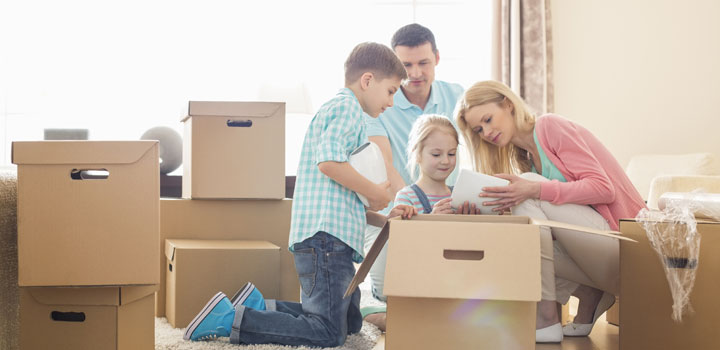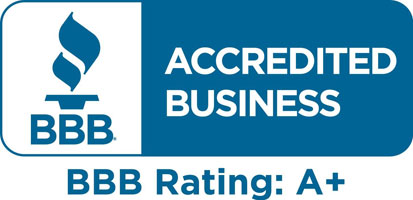Because of the stresses, long list of responsibilities and fatigue that we, as parents, go through when planning for and going through a move, it can be easy to overlook what our children might be going through. Here is a list of important things to consider to make this important transition as stress-free as possible for your school-aged children.
 Social / Emotional Considerations
Social / Emotional Considerations
Any kind of change can be particularly scary to children, and it is normal for school-aged children to magnify in their minds anything that is even slightly fear-producing.
Therefore, children are often impacted even more than their parents by a move — even though they may not express or overtly show their level of stress or worries on the outside.
Some of the worries and emotions your children could experience during a move include the following:
- A sense of insecurity and fear about making new friends, or being accepted or liked at the new school.
- Academic worries related to switching teachers and schools, and encountering new curricula and standards.
- A sense of loss over leaving current friends, teachers and even their current home and neighborhood.
- Additional apprehension should the move be associated with life-changing events such as divorce, change-of-job for a parent, financial changes in the family, etc.
More often than adults, children will mask their fears, concerns, anxiety or even depression, sometimes because they themselves are not aware of their underlying emotions or do not want to burden their parents.
So what can you do as a parent to help ensure that your children go through the move with as little stress as possible?
- Be aware of just how much the move could be affecting your children and encourage them to talk about their feelings and concerns. Do this in a calm, nurturing environment. Maybe plan a “special” dinner with their favorite foods and lead a family discussion Share with them one of your concerns or worries. But then tell them how you worked this out. This will give you the opportunity to draw out their feelings and then help them through their concerns. They will often be tremendously relieved.
- Make the move fun and give them a sense of control by allowing them to do some planning with you. For example, you can go online together to check out the location of the library closest to your new home, or the closest bicycle shop or specialty stores they like, or the nearby Y or Parks with classes or sports they may want to enroll in. Then make a point of putting on your moving calendar a time that you can go over with your children (if you are moving to someone in close enough proximity) to look over the new places. If you let your children feel that they are a part of the moving process, they will also feel more a sense of excitement over the experience.Take them to the new house or show them pictures of the new house and invite them to participate in the decorating process. Ask them what color paint they would most like for their new bedroom. Offer to buy them a new comforter, and together make some exciting plans for what the new house, and their new bedroom, will look like.
- Create additional moments of family bonding during the time of the move. As tired as the grown-ups might be, try to sneak in a family game night just before or after the move, go out to the movies, turn the moving boxes into a fort, or turn the packing process into some sort of game. It’s good for them to associate the moving process with something happy and celebratory.
Practical Considerations
Be sure that you have done all the preparatory work necessary to ensure that your children make as seamless a transition into their new schools as possible. If appropriate, find out the summer reading or summer homework for the new school. Speak to your children’s current teachers to determine if there is any information that would be important to impart to your children’s new teachers about their strengths, needs or preferences. Speak with the new school and, if possible, the new teachers to ascertain if your children will need to do any catch-up work so that they are on par with the other children. If necessary, provide them with whatever tutoring or help they need, so that they can be optimally successful and happy at the new school.
Do everything you can to ensure that your children will be able to make friends quickly. Look into enrolling them in local after school classes or leagues. If you attend a house of worship, look into classes and groups your children might enjoy. Try to meet the parents of your children’s new classmates and set up after school playdates.
It is critical to plan ahead for the big day of the move. Here are more tips to plan for your move.
Here are some other things to consider:
- It is best to have your children stay with a grandparent, family member or trusted good friend on the actual day if someone is local. This will keep them safe and happily engaged.
- If this is not possible, hire a sitter to spend the day with you, looking after their safety and tending to their needs.
- Prepare ahead of time ample food and drink. The food should be as non-perishable as possible and easy to eat. Include in your ice chest some of your children’s favorite foods and treats to keep them positive.
- Prepare ahead of time toys, games and books to keep your children entertained during the long moving process.
- Your children are going to want to take a nap or relax during the process. It’s a good idea to leave a blanket, pillow, or other comfort items (perhaps their favorite stuffed animals) that they have access to during the day.
- It is critical to have with you a box of items that you might need in a hurry. Make sure that this box remains in a safe area during the move (the bathtub is a great place to keep important items that stay with you and don’t go on the moving truck). These items should include medicine, Band-Aids, your children’s favorite books, toiletries, and other personal items.
- Given that the front door of your old and new homes will be open during the move, make certain that your children are kept safe and remain inside the home.
- Children will often want to play with the moving dollies and cartons that are in the home during the move. Moving boxes can be a great source of fun for children, but they can be hazardous with little children if your little one gets inside. And attempts to speed race on a dolly can also prove treacherous. Be sure to monitor your children’s usage of moving equipment during a move.


